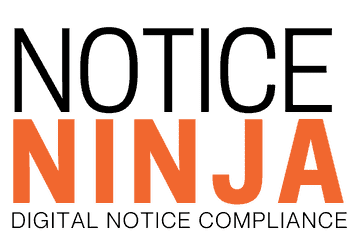Yes, NOTICENINJA is corporate tax notice compliance software that automates key workflows including notice assignments. The platform employs a rule-based system that can manage multiple level rules and ensure notices are directed to the appropriate stakeholder. As a result, you’ll never have to worry about notices being misdirected or slipping between the cracks.

Why Notice Automation Needs More Than an Inbox
.png?width=1000&name=MoreThanInbox).png)
29 July
Tax Notices Are Not Just Documents
Tax operations aren’t broken because of paperwork. They’re broken because the systems that manage notices were built for intake, not resolution.
In recent years, more platforms have emerged promising AI-powered notice handling, often leaning on OCR to scan incoming documents and organize them neatly. At first glance, that seems like a step in the right direction. After all, digitization saves time. But for tax teams juggling notices across dozens of jurisdictions and managing real regulatory risk, this surface-level automation creates a false sense of progress.
Because organizing notices is not the same as resolving them.
The Real Work Begins After the Scan
When a notice lands—whether it’s from the IRS, a state department of revenue, or a local agency—it doesn’t just need to be read. It needs to be assigned. It needs a POA pulled and submitted. It might require filing an amended return or a payment dispute. These are not optional next steps. They are critical pieces of a workflow that, if delayed or missed, can escalate into penalties, audits, or worse.
What most inbox-style platforms fail to deliver is that full journey. They stop at “read and sort,” leaving your team to manually figure out what to do next. This often means bouncing between systems, digging through old emails, relying on tribal knowledge, and chasing down internal approvals just to close out a single notice.
And that’s where the real risk lives—not in how fast you scanned the document, but in how consistently you followed through.
Automation Should Drive Resolution, Not Just Routing
What today’s tax teams need is a system that not only reads the notice, but understands what to do with it. That means recognizing the agency and tax type, assigning the notice to the right person, triggering the correct compliance workflow, and tracking that resolution until the issue is fully closed.
It means knowing when to generate a POA, surface a registration issue, or escalate based on jurisdiction-specific rules. And it means all of that happening without someone needing to babysit a spreadsheet or a folder of PDFs.
This is the kind of automation that actually reduces risk. Not the automation that just makes your inbox prettier, but the kind that closes compliance loops and prevents things from slipping through the cracks.
Private Equity and Enterprise Complexity Raises the Stakes
This complexity is especially pronounced in enterprise organizations and private equity firms. With multi-entity structures and filings across dozens of jurisdictions, notice volume doesn’t just increase—it fragments. Some of it is handled in-house. Some is passed downstream to outsourced partners or accounting firms who often lack the full operational context to resolve it quickly.
Without a clear, coordinated workflow, resolution becomes inconsistent and accountability gets lost in the handoff. When that happens across 30, 50, or even 100 portfolio companies, the exposure scales quickly.
Risk Lives in the Gaps, Not the Inbox
As tax departments become more accountable for operational efficiency and audit readiness, these details matter. It’s not just about speed—it’s about confidence. Confidence that nothing is being missed. Confidence that there’s a full record of what happened and when. Confidence that the team can focus on higher-value work instead of tracking down unresolved notices from three months ago.
The pressure isn’t going away. In fact, tax notice volume continues to rise as regulatory agencies get more aggressive and jurisdictions expand their enforcement efforts. If your current process relies on scanning and tagging as your main form of automation, you’re likely already feeling the cracks.
Inbox-level automation might seem like a good first step, but it’s not the last one. The teams that will lead in tax ops aren’t the ones who scan faster. They’re the ones who resolve faster.
And that comes from treating tax notice automation not as a document problem, but as a workflow problem.
Get the Checklist: How Audit-Ready Is Your Notice Process?
Managing compliance across multiple entities, jurisdictions, and partners introduces risk that AI tagging alone won’t solve. If you work with or within private equity, this becomes even more critical.
Grab our immediate download, Private Equity Tax Notice Resolution Audit Checklist (PDF) to evaluate where your process is strong and where exposure may be hiding.
RELATED POST
- How OCR and Automation Are Transforming Property Tax Compliance
- Reclaiming the Compliance Mailroom: How to Automate Document Intake and Eliminate Risk
- Rethinking Compliance Starts with Power of Attorney
